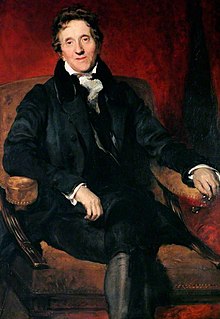Portal:Oxfordshire
The Oxfordshire Portal

Oxfordshire (/ˈɒksfərdʃər, -ʃɪər/ OKS-fərd-shər, -sheer; abbreviated Oxon) is a ceremonial county in South East England. The county is bordered by Northamptonshire and Warwickshire to the north, Buckinghamshire to the east, Berkshire to the south, and Wiltshire and Gloucestershire to the west. The city of Oxford is the largest settlement and county town.
The county is largely rural, with an area of 2,605 km2 (1,006 sq mi) and a population of 691,667. After Oxford (162,100), the largest settlements are Banbury (54,355) and Abingdon-on-Thames (37,931). For local government purposes Oxfordshire is a non-metropolitan county with five districts. The part of the county south of the River Thames, largely corresponding to the Vale of White Horse district, was historically part of Berkshire.
The lowlands in the centre of the county are crossed by the River Thames and its tributaries, the valleys of which are separated by low hills. The south contains parts of the Berkshire Downs and Chiltern Hills, and the north-west includes part of the Cotswolds; all three regions are Areas of Outstanding Natural Beauty. The county's highest point is White Horse Hill (261-metre (856 ft)), part of the Berkshire Downs. (Full article...)
Selected article

The buildings of Nuffield College, one of the colleges of the University of Oxford, are to the west of the city centre of Oxford, England, and stand on the site of the basin of the Oxford Canal. Nuffield College was founded in 1937 after a donation to the University by the car manufacturer Lord Nuffield; he gave land for the college, as well as £900,000 (approximately £246 million in present-day terms) to build and endow it. The architect Austen Harrison, who had worked in Greece and Palestine, was appointed by the University to design the buildings. His initial design, heavily influenced by Mediterranean architecture, was rejected by Nuffield, who called it "un-English" and refused to allow his name to be associated with it. Harrison reworked the plans, aiming for "something on the lines of Cotswold domestic architecture", as Nuffield wanted.
Construction of the second design began in 1949 and was finished in 1960. Progress was hampered by post-war building restrictions, and the effects of inflation on Nuffield's donation led to various cost-saving changes to the plans. In one change, the tower, which had been planned to be ornamental, was redesigned to hold the college's library. It was the first tower built in Oxford for 200 years and is about 150 feet (46 m) tall, including the flèche on top. The buildings are arranged around two quadrangles, with residential accommodation for students and fellows in one, and the hall, library and administrative offices in the other. The chapel has stained glass windows designed by John Piper.
The architectural historian Sir Howard Colvin said that Harrison's first design was Oxford's "most notable architectural casualty of the 1930s"; it has also been described as a "missed opportunity" to show that Oxford did not live "only in the past". Reaction to the architecture of the college has been largely unfavourable. In the 1960s, it was described as "Oxford's biggest monument to barren reaction". The tower has been described as "ungainly", and marred by repetitive windows. The travel writer Jan Morris wrote that the college was "a hodge-podge from the start". However, the architectural historian Sir Nikolaus Pevsner, although unimpressed with most of the college, thought that the tower helped the Oxford skyline and predicted it would "one day be loved". The writer Simon Jenkins doubted Pevsner's prediction, and claimed that "vegetation" was the "best hope" for the tower – as well as the rest of the college. (Full article...)
Selected biography
Sir John Soane RA FSA FRS (/soʊn/; né Soan; 10 September 1753 – 20 January 1837) was an English architect who specialised in the Neo-Classical style. The son of a bricklayer, he rose to the top of his profession, becoming professor of architecture at the Royal Academy and an official architect to the Office of Works. He received a knighthood in 1831.
Soane‘s best-known work was the Bank of England (his work there is largely destroyed), a building which had a widespread effect on commercial architecture. He also designed Dulwich Picture Gallery, which, with its top-lit galleries, was a major influence on the planning of subsequent art galleries and museums. His main legacy is the eponymous museum in Lincoln's Inn Fields in his former home and office, designed to display the art works and architectural artefacts that he collected during his lifetime. The museum is described in the Oxford Dictionary of Architecture as "one of the most complex, intricate, and ingenious series of interiors ever conceived". (Full article...)
Topics
Selected images
Subcategories
Things to do
Find references for: A420 road | Abingdon, Oxfordshire | Abingdon School | Anthony Kitchin | Banbury | Banbury mutiny | Bicester | Bicester Community College | Blowing Stone | Boris Johnson | Brakspear | Brenda Rawnsley | Chiltern Main Line | Clanfield F.C. | Colin Greenwood | Debagging | Deddington | Degrees of the University of Oxford | Edward, the Black Prince | Edward the Confessor | European route E5
Expand: A4260 road | Alvescot | Appleton, Oxfordshire | Appleton-with-Eaton | Ardington | Ardington Wick | Arms of the University of Oxford | Ascott Earl | Ascott d'Oyley | Ashbury, Oxfordshire | Aston Rowant | Aston Upthorpe | Baldon Row | Balscote
Create: Banbury Cross Retail Park | Banbury Golf Club
WikiProjects
Related portals
Associated Wikimedia
The following Wikimedia Foundation sister projects provide more on this subject:
-
Commons
Free media repository -
Wikibooks
Free textbooks and manuals -
Wikidata
Free knowledge base -
Wikinews
Free-content news -
Wikiquote
Collection of quotations -
Wikisource
Free-content library -
Wikiversity
Free learning tools -
Wikivoyage
Free travel guide -
Wiktionary
Dictionary and thesaurus



























